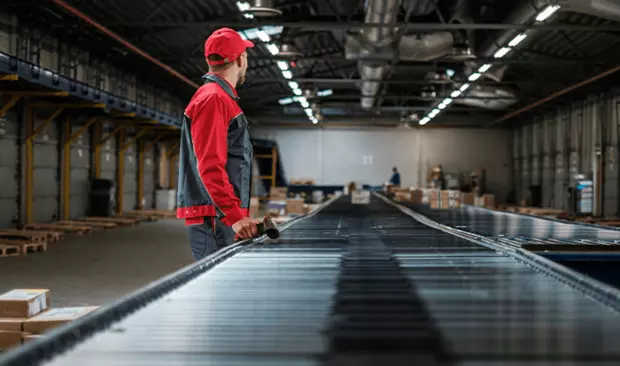Addressing the UK’s warehouse labour shortage

The UK warehousing industry has been undergoing a significant revolution as it adapts to the digital age and the exponential growth of ecommerce. With more and more consumers opting for the convenience of online shopping, demand for warehousing has skyrocketed, leading to a surge in investment in the retail warehouse sector. In fact, investment volumes reached a staggering £3.67bn in 2021, the highest it has been since 2015.
The influx of investment has also led to the creation of countless job opportunities, with many companies in the sector actively seeking skilled workers to join their ranks. However, despite the high demand for workers, there seems to be a significant shortage of staff to fill the vacant positions.
This labour shortage is reflected in the data provided by the Office of National Statistics (ONS), which shows that while the number of businesses in the transport and storage sector has almost doubled in the past 10 years, the employment rate has only increased by 20% as of December 2021 compared to the same month in 2011.
Reasons for the labour shortage
The reasons for this labour shortage are multi-faceted. It could be due to a lack of available staff, but it could also be attributed to the industry’s shift towards automation for certain roles. This trend is becoming more and more prevalent, with companies investing in cutting-edge technology to streamline their operations and reduce the need for human labour.
The fact that there are now more businesses with fewer than five employees in 2021 (79%) compared to 2011 (67%) seems to support this notion, as automation allows smaller businesses to compete on a more level playing field with larger corporations.
It’s also likely that Brexit has played a role in exacerbating the worker shortage. It was estimated that, in a ‘typical’ UK warehouse, around one in five workers were EU migrants, which would have resulted in a 20% cut post-Brexit. Logistics UK’s 2022 performance tracker found that over 18% of businesses reported severe to very severe problems recruiting warehouse staff – a 5% jump from 13% in 2021.
But it’s not just Brexit that is to blame for the recruitment crisis. There are wider issues at play, such as the sector’s image problem with new recruits. Despite the logistics sector employing over 2.6 million people, over 90% of people have never considered a career in the logistics sector according to Generation Logistics. The benchmark research from this same campaign found “demanding” and “boring” were among the most common words associated with warehouse work, at 37% and 30% respectively.
The role of technology & training
There is, however, a way to address this issue. Employer investment in technology could make jobs easier, boost job satisfaction and even entice people into such job roles. Indeed’s December 2022 survey of front-line retail and warehouse workers across the UK found that 55% of respondents said technology is making their day-to-day jobs easier and 44% got increased job enjoyment and satisfaction.
But it’s not just a case of investing in the right technology. Retailers, and warehouse operators, must also invest in staff training for such solutions, or be selective in choosing systems which are easy to use. The right tech investments could increase productivity and allow retailers to retain staff, redeploy them, and make them more flexible.
Balancing automation and human interaction
Ultimately, there is no easy fix to the ongoing labour shortage within the UK warehousing sector. While technology can ease the strain, it is a balance between automation and human interaction that is required. The warehouse industry is undergoing a radical transformation, and with it, a critical labour shortage.
To alleviate the strain, employers must invest in the right technology, as well as in staff training and education, to ensure a productive and successful sector. It is only through a combination of automation and human interaction that the warehousing industry can realise its full potential.
Interested in exploring how technology is addressing some of the warehousing industry’s biggest setbacks? Download our free whitepaper on “Automation within reach in 2023 to receive valuable insights on how to optimise your operations through automation and how to select the right technology.
DOWNLOAD NOW